The Role Food Delivery Management Software Plays for Restaurants
In this article, we discuss food delivery management software for restaurants, and how helps you provide a better, faster, cost-effective food...
Ready to upgrade your food delivery in 2022? This post contains 10 food delivery trends that are working GREAT right now.
Ready to upgrade your food delivery in 2022?
Brilliant!
This post contains 10 food delivery trends that are working GREAT right now.
(And in 2022)
So if you want to boost sales and order volumes, and take your meal delivery service to the next level, these trends can get you there.
Let’s dive in!
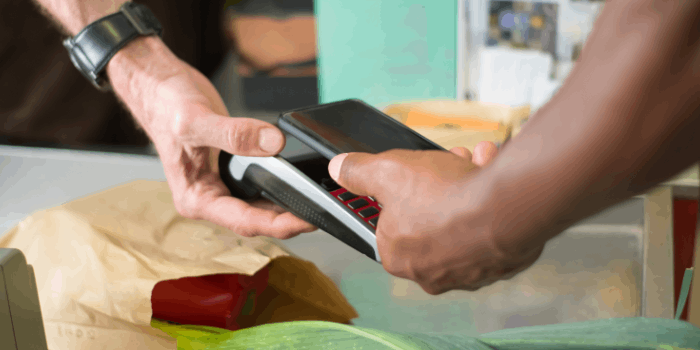
Contactless food delivery is currently one of the most popular trends in food delivery.
All because of COVID-19.
As of writing this post, there have been 343 million reported cases worldwide in 2021.
That means that many countries still enforce coronavirus measures, including social distancing, lockdowns, and quarantine.
And in many countries food delivery is the only way to keep doing business.
In fact, the food service industry has embraced direct-to-consumer delivery as their main source of revenue.
Many restaurants, food outlets, and kitchens have embraced new ways of bringing fresh food to customers:
So what is contactless food delivery?
Simply put:
Contactless food delivery is any type of delivery service where meals and groceries are delivered without any direct contact with the customer.
Typically, it works like this:
Step #1: A customer uses an online food delivery platform to order a meal or groceries
Step #2: The order is paid for online using a secure payment method (via credit card)
Step #3: The items in the order are prepared and processed for delivery
Step #4: The food is delivered to the customer and left at a safe area
Step #5: The customer gets notified so he can pick up the delivery
Safe areas where delivery agents leave meals include doorsteps, curb, delivery lockers, garages, and any other space where they won’t come into contact with the customer.
This has given rise to specific types of contactless food delivery, such as curbside pickup.
As the world continues to battle Covid-19, we believe this food delivery trend will continue to remain relevant in 2022.
But also evolve beyond it’s current form. (So watch out for it)
Autonomous delivery is one of the more innovative food delivery trends in 2022.
It involves the help of robots and artificial intelligence.
Although it sounds like Sci-Fi, residents of London are already getting their food delivered by robots.
In 2020, residents of Milton Keynes began using robots (made by Starship Technologies) to get their groceries delivered.
On the other side of the Atlantic, students of George Mason University in Virginia started sending robots to pick up orders from restaurants and food courts around their campus.
While residents of Denver and Berkley have already become accustomed to Kiwibots delivering food to their homes.
Although we’re a long way from full robotic food delivery, the market for delivery robots is growing.
In fact, it’s projected to reach $957 million by 2026.
And while you may think that robots are beyond your reach, it isn’t.
If you allow your customers to order food using a food delivery app, artificial intelligence (AI) is part of your business.
Companies like UberEats, Postmates, Doordash, and others use AI as part of their food delivery platforms to make predictions about your customers.
AI integrated software helps to make meal suggestions and anticipate food preferences.
While the data gathered from these apps may help you to customize your offers both in terms of menus and the various delivery options that you provide.
(If you can get a hold of them)
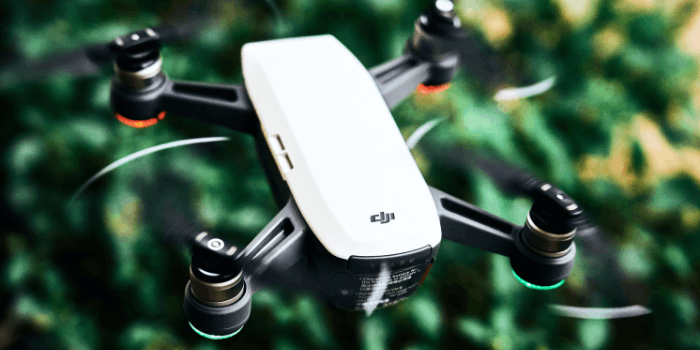
Despite many challenges, drone delivery is emerging as one of the most innovative trends in fast food delivery.
Domino’s, Zomato, UberEats food delivery and many others have been testing drone delivery operations.
In fact, the global drone delivery market is expected to grow from $1,522.4 million to $31,188.7 million by the year 2028.
However, the difficulties are still there.
Short battery life, limited capacity, and the fact that drones can’t travel far all hinder mass use of drones in food delivery.
Still, food delivery chains like Domino’s already managed to finalize pizza and food delivery orders using drones.
Once the process gets more sustainable, it will probably become a preferred trend in the food delivery industry.
That’s because it will enable food suppliers to cut delivery times and escape the hassle of delivery routing in cities and avoiding heavy traffic.
Other benefits of drone delivery are lower fuel consumption and less manual intervention during the process.
Delivery by drones will also have the option to add advanced features like insulated compartments, integrated payment systems, voice commands, and more.
Driverless delivery cars is a food delivery industry trend that’s not yet active.
But it has HUGE potential in the future.
And not just in food delivery, but in distribution and logistics as a whole.
So we had to include it on our list.
The biggest advantage that we see driverless cars having in the future of food delivery will be in the way they save time and money when it comes to managing the workforce.
Fleet dispatching will generally be easier, while the fleet itself will be more productive.
This alignes with the global driverless vehicle trends:
By 2040, the number for self-driving cars and other vehicles on the road will reach 33 million. (According to forecasts)
Nuro, a robotics startup is planning to start a driverless delivery service in early 2022.
The idea is that autonomous vehicles provide restaurants with deliveries that are safer and more affordable.
It will also help businesses increase their delivery capacity.
Nuro has already gone through trials with Walmart, Kroger, and Domino’s.
Other companies like Waymo and TuSimple are also entering the self-driving car industry.
Investing in driverless cars for delivery may be way off for now.
But over the next decade, as self-driving cars become more affordable, you can expect greater adoption in food delivery.
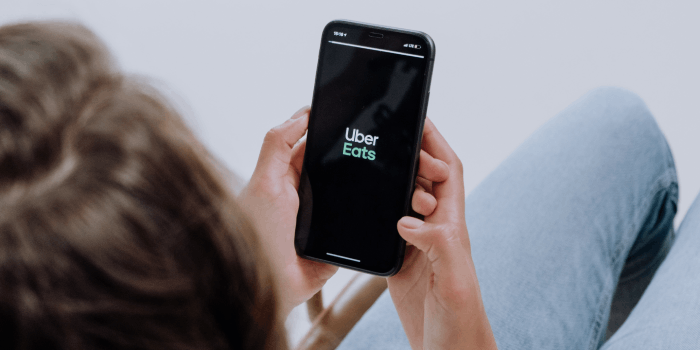
This food trend isn’t new.
In 2017, Amazon was the first tech giant that entered the food industry when it acquired Whole Foods.
After that, Uber joined with UberEats - their food delivery platform designed for restaurant and grocery stores.
Finally, Google joined the game.
Google allows restaurants and food services in the United States to accept online orders for pickup or delivery from customers directly via their Business Profiles on Google.
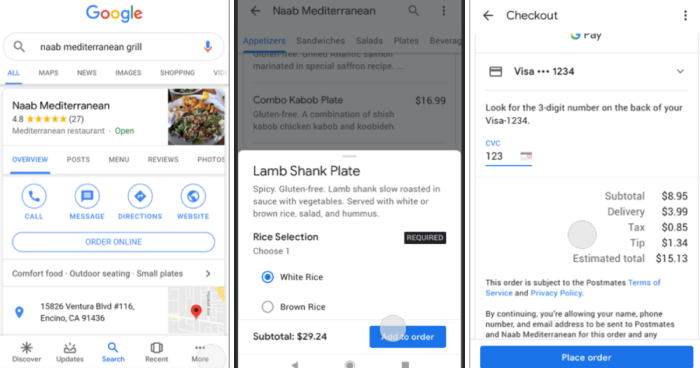
Source: Search Engine Journal
Although this is currently reserved only for businesses in the US, the success of the food ordering system means it’s going to spread to the rest of the world in the coming years.
As the food market grows in 2022, the trend of tech companies entering the food market will continue.
We just have to see what company joins the fold next…
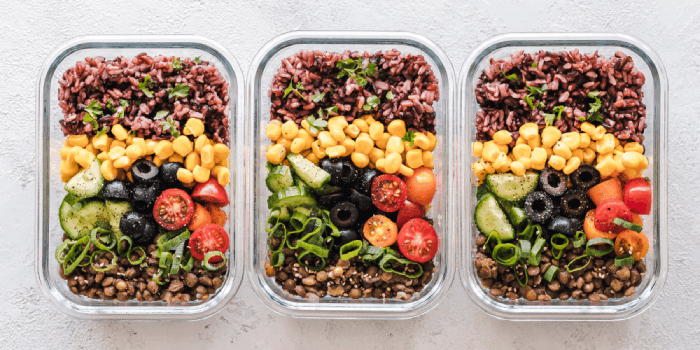
Millennials are driving some serious changes in the food delivery market.
One such trend is food delivery subscriptions.
This generation is the first ever that would rather stay at home than go out.
This behavior means millennials order customized meal kits to their home address.
Food delivery subscriptions work like this:
Step #1: A customer would subscribe to a restaurant or kitchen that prepares meals.
Step #2: They would typically pay a monthly subscription fee.
Step #3: Each week, they would receive a menu and choose a meal for each day.
Step #4: The meal kit for dinner or lunch is delivered to them fresh each day.
Subscription food boxes are also popular among people looking to try new flavors or different cuisines.
Another thing that’s boosting food delivery subscription trends is the rise of specific diets.
With pre-made meal kits, restaurants can cater to more customers that eat according to a gluten-free, vegetarian, vegan, paleo, or organic diets.
In doing so, restaurants can raise offers and increase customer reach, order volumes, and profits.

Virtual kitchens, known as cloud kitchens, prepare DELIVERY-ONLY meals.
This is one of the more profitable food delivery trends in 2022.
To start a virtual kitchen, all you need to set up is a kitchen (without a dining area).
Customers order meals online, via a food delivery platform like UberEats or Dileveroo.
While the cloud kitchen can choose whether to use self-delivery or the provider to bring orders to customers.
Right now, the trend of virtual kitchens is picking up the pace.
Two things contributed to this:
First, the COVID-19 pandemic. Because of the coronavirus, nearly 100,000 establishments had to close in the first six months of the outbreak.
Second, online meal delivery is on the rise. In fact, in the first year of the pandemic food delivery increased by 150% worldwide.
So if you’re looking to start a food delivery business without too much upfront investment, this may be the choice for you.
While the biggest benefit to this trend is that you can offer meals with multiple shippers.
This means you can easily expand your service area, while at the same time growing and scaling your food delivery business faster. (Since there are less capital requirements)
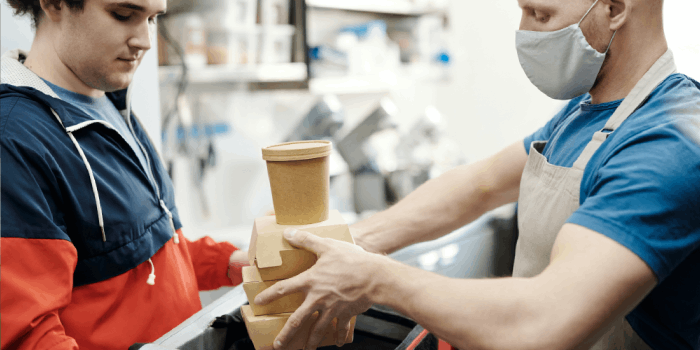
While many companies have embraced online food delivery, some are taking a different approach:
Instead of using delivery providers, a lot of food businesses are building in-house delivery fleets.
The benefit of building an agile delivery in-house is that you don’t hand over a large portion of delivery revenue to a third-party provider.
Companies like Chick-fil-A have already reaped the benefits of using their own delivery service.
This includes full control over customer service and how you collect consumer data.
But also greater branding and visibility, and the way they build brand awareness via delivery.
But restaurants and fast food chains aren’t the only ones reaping the benefits.
Farms and wholesalers like Kraemer’s Nursery, EFOODZ, and Angelic Organics have also retained much of their revenue through their internal delivery services.
Despite the complexity of managing delivery at scale, with tens of thousands of orders every day, the logistics behind it has become easier thanks to developments in delivery software.
This means companies can purchase SaaS delivery management software and easily deliver across multiple restaurants and points of sale, regardless of their order volumes.
| Learn more: Here’s everything you need to know about owning and operating an internal vs. external delivery fleet. |
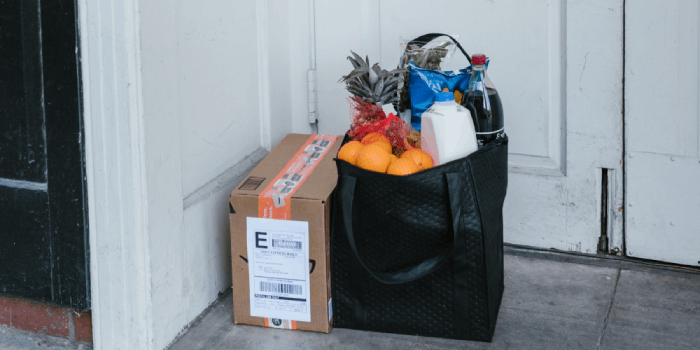
With new fresh food delivery trends emerging, online grocery delivery skyrocketed!
In fact, 26% of shoppers order groceries online more than once per month.
(Source: Omnichannel Grocery Study by Google and Bain)
Accommodating these trends in grocery delivery, wholesalers and retailers will face new problems:
One way grocers can optimize delivery is by using grocery stores as fulfillment centers.
This cuts the time-to-consumer, which ensures groceries and food arrives fresh.
A big advantage over giants like Whole Foods, Walmart, and Tesco.
Combined with buy online, pick-up in store (BOPIS) and grocery delivery software, customers can enjoy a faster service and greater convenience.
Third-party delivery is one of the growing trends in restaurant delivery.
Many restaurant chains are partnering with multiple third-party companies to raise delivery capacities. (Even when demand is high)
Although this strategy helps businesses increase order volumes and improve reach, there is a downside:
With 3PLs and 4PLs, a significant amount of delivery operations is out of your control.
Some businesses try to avoid this by using technology.
They rely on their own websites and order management systems (OMS).
And then hiring DaaS (delivery as a service) providers to finalize deliveries.
To have greater control over the delivery process, they use software, as well.
Delivery management platforms can integrate with 3PL systems.
This enables the user to have complete visibility over how providers deliver orders to their customers.
And because the software can track key metrics in logistics, companies can ensure that all deliveries are handled according to their standards. (And not those of the 3PL)
What trend seems like a good fit for you?
Are you looking to make it part of your restaurant or food delivery business?
Let us help you even more!
In this article, we discuss food delivery management software for restaurants, and how helps you provide a better, faster, cost-effective food...
In this guide, we’re going to show you how to start a successful food delivery business from scratch or make it part of your restaurant, step by step.
What technology is driving the change in delivery? How can you improve and keep up? To help, here are 11 new trends in delivery management to follow.
Be the first to know when new articles are released. eLogii has a market-leading blog and resources centre designed specifically to help business across countless distribution and field-services sub sectors worldwide to succeed with actionable content and tips.
